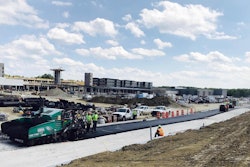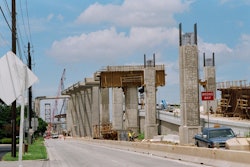The Fixing America’s Surface Transportation Act (FAST Act) was passed by Congress late last year with broad bipartisan support. Yet, few are calling the new five-year highway bill a resounding success. As noted in our Special Report, the $305 billion federal spending package has a number of positive provisions, but fails to address the larger issues the transportation sector faces.
According to Pete Ruane, president and CEO of the American Road and Transportation Builders Association (ARTBA), legislators “sidestepped” a chance to put the federal highway and transit investment program back on solid ground long term. Congress chose to maintain the existing gas tax rather than develop a sustainable funding mechanism to shore up Highway Trust Fund (HTF) revenues.
Funding levels in the FAST Act also fall well below what is needed. “Congress and the Obama Administration... fell short in providing the level of investment that would result in demonstrable improvement in the overall physical conditions, performance and safety of the system,” Ruane states. “At best, we will be treading water.”
The legislation does modestly increase funding levels; provide a level of certainty for state DOTs over a five-year period; and reduce federal red tape for state transportation improvement programs. “This, in turn, will help maintain employment, assists the public and private sectors to plan ahead and it will speed up project delivery,” Ruane acknowledges.
It also provides greater flexibility for state and local governments in spending on necessary projects, and an expanded focus on transportation projects that are national or regional in scope.
While a positive move forward, the highway bill fails to address revenue generation, instead siphoning funds from several sources to fill the gap between spending levels and HTF revenues. This is a temporary fix at best.
Members of the Americans for Transportation Mobility (ATM) Coalition, believe Congress must continue to pursue dependable sources of funding that will meet the nation’s infrastructure needs for the foreseeable future.
“It is a good thing for American communities, businesses and consumers that we’re not facing a series of short-term patches any time soon,” states Thomas W. Smith III, FASCE, executive director, American Society of Civil Engineers. “But it’s not too soon to start looking down the road at the enduring need for sustainable funding solutions to put this critical national program back on solid footing for the next decade.”
Ed Mortimer, executive director of the ATM Coalition and executive director of Transportation Infrastructure, Congressional and Public Affairs for the U.S. Chamber of Commerce, agrees, noting, “Ultimately, the country needs a dedicated, sustainable funding source to meet the nation’s tremendous and still growing transportation infrastructure needs.
“However,” he adds, “the FAST Act is a bipartisan compromise that will provide states across America with certainty around which they can plan and carry out critical transportation projects for at least five years.”
That in itself is at least a step in the right direction.

















